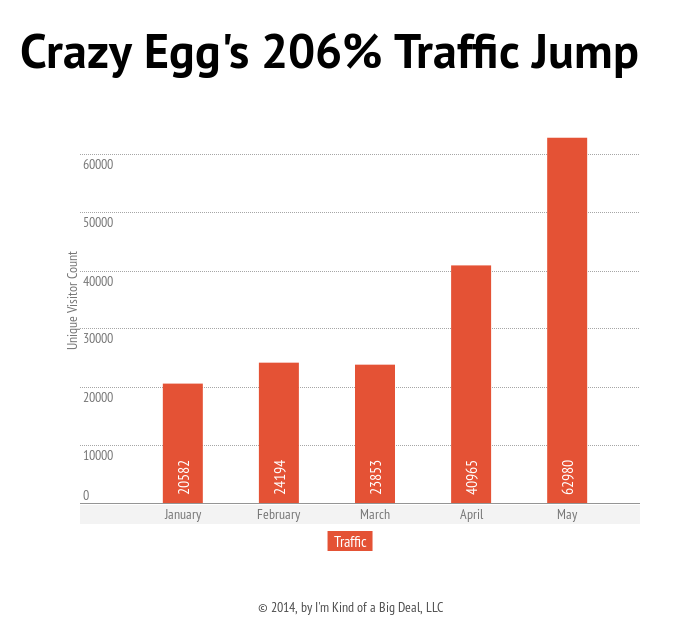Creating Content That Converts: The Step-by-Step Guide
All content is not created equal.
Some content will go viral, generating tons of hot traffic to your blog, while other content will be lost in the archives. If you want more of the first kind, you’ve got to put your readers first.
By now, you probably know that one of the ways to fail in business is to ignore the target audience’s needs and desires. If you’re creating content without a smart and documented strategy, your content will not convert.
According to Content Marketing Institute, “Business-to-business (B2B) marketers who have a documented strategy are more effective and less challenged with every aspect of content marketing.”
The first wave of content marketing was simple: bloggers, content writers, and marketers targeted a particular keyword in their content, and felt pretty confident that Google would at least index and rank their content pages ahead of the competitors.
The next wave of content marketing is proving to be much more challenging. But, for those who are willing to put in the work and change their approach, success is definitely possible. The key difference is that your content must convert well.
It’s definitely not all about quantity, but publishing more content on your blog can help you to convert more visitors into leads and customers. A research survey by CMI showed that 48% of B2C marketers and 42% of B2B marketers now publish content more frequently than once a week.

Are you creating content, but not getting expected results? Follow these 6 steps to learn how to create converting content.
More than anything else, what you need is step-by-step guide for creating content that converts. Keep an open mind, and learn how I create content that consistently converts:
Step #1: Find content ideas that are proven to convert.
Over the past several years, marketers have made giant strides in the way that they create content for their blogs, social media platforms and information products.
WordPress blogs are springing up in every nook and cranny of the web. What’s more, one recent study shows that 86% of B2B marketers report that their organizations are using content marketing. Another reveals that 70% are creating more content than they did one year ago.

The demand for fresh, high-value content is high. If you invest time in creating it, you’ll reap the rewards. But, the competition is strong. Most marketers are going give up, but those who learn the tricks and get customer insights will grow their businesses.
You can get viable ideas from blog posts, infographics, videos, magazine covers, online publications, Slideshare presentations and more. Valuable ideas will help you create content that’ll generate quality leads for your business.
For example, IntelliResponse embraced a content strategy in 2010. They used some ideas from their competitors and from customer insights to create high-value content that increased their site traffic by 4000%.
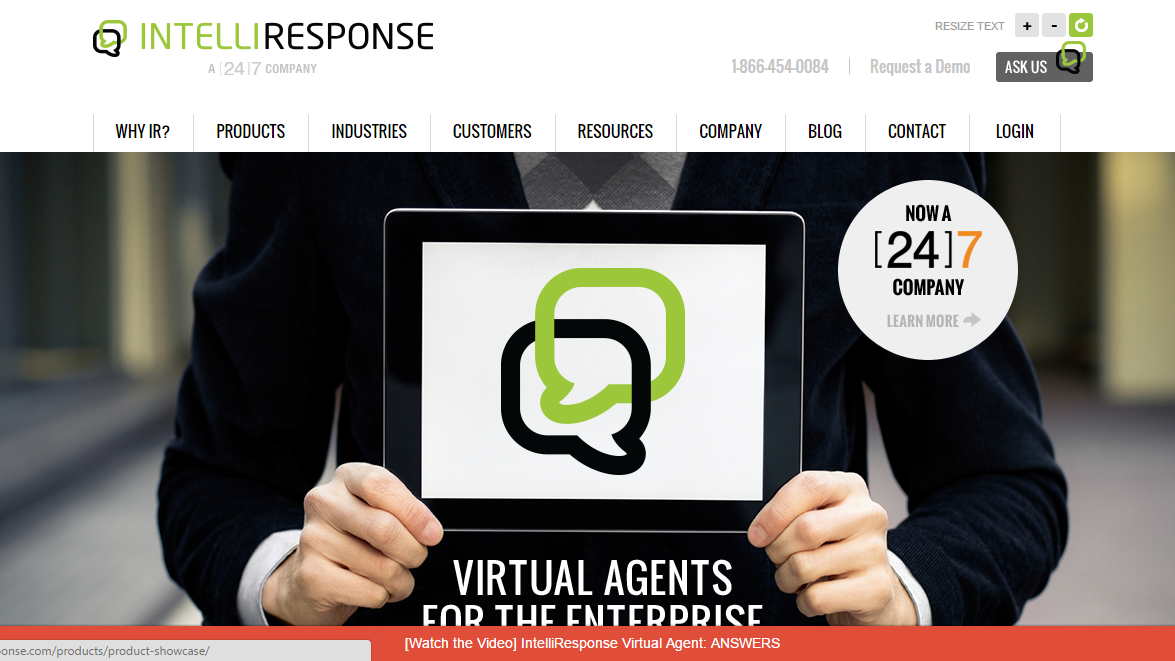
They also saw a 100% increase in lead generation, with 35% of monthly leads generated from paid ads promoting infographic and white paper content — up from 5% two years prior wie kann ich mir kostenlos filme herunterladen.
Crowe Horwath, a public accounting and consulting firm, used content marketing tactics, such as executive briefs, case studies, infographics, checklists, Q & A and a Brainshark video to expand their brand.
It generated 778 contacts and focused on increasing engagement, resulting in a 70% open rate for emails, up from 10%. It also netting the firm 2 engagements worth about $250k in revenue.

Virtually any piece of content out there is a potential source of ideas for your next campaign. Here are some ideas from Docstoc.com. On the homepage, there are viable videos with some enticing titles:
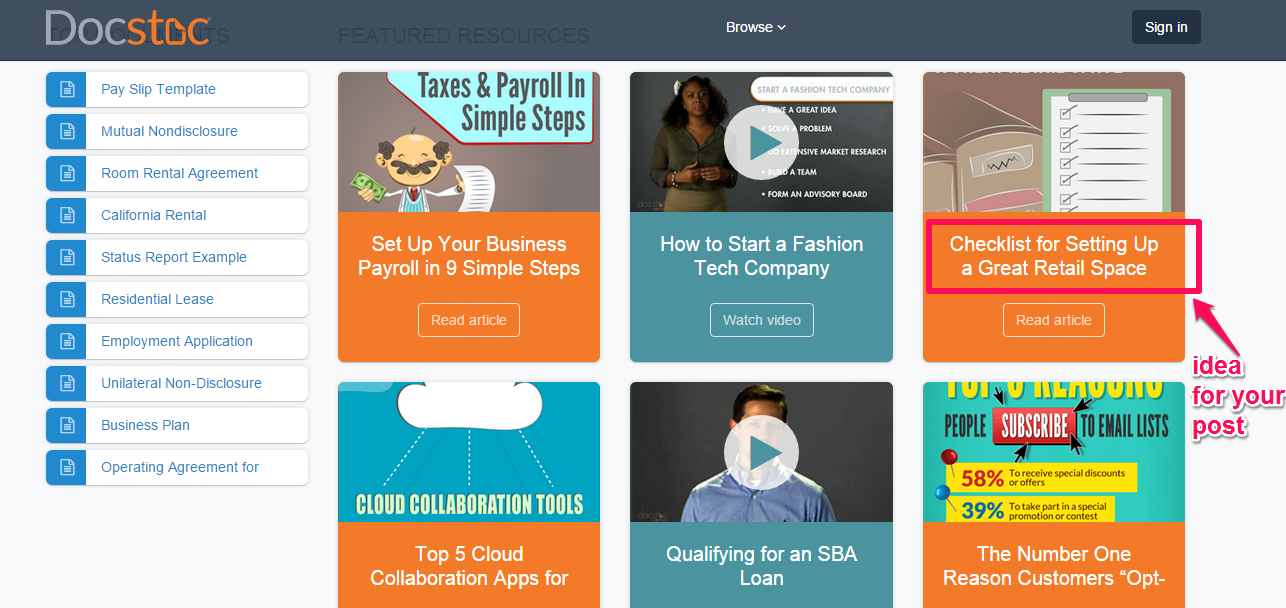 Often, it’s not really the content that generates the most views and social shares for your content, but how you structure the headline.
Often, it’s not really the content that generates the most views and social shares for your content, but how you structure the headline.
After all, we know that any internet marketing topic has the potential to go viral.
One of the headlines highlighted above is:
- Checklist for Setting Up a Great Retail Space
From this single headline idea, you can come up with different ideas to create compelling content. For example:
- 7 Checklists for Setting Up a Great Landing Page That Works
- 3-Step Checklist for Converting Your Blog Readers into Customers
Another headline in the screenshot above is:
- The Number One Reason Customers Opt-in to Your List
Here are fresh ideas to make your content compelling:
- The Number One Reason Customers Will Not Opt-in to Your Email List
- The Number One Reason Why You Didn’t Generate 5,747 Visitors Last Week
You can also get ideas for great content from Issuu.com. Just go to the homepage and you’ll find lots of marketing-related online publications and niche-specific magazines:
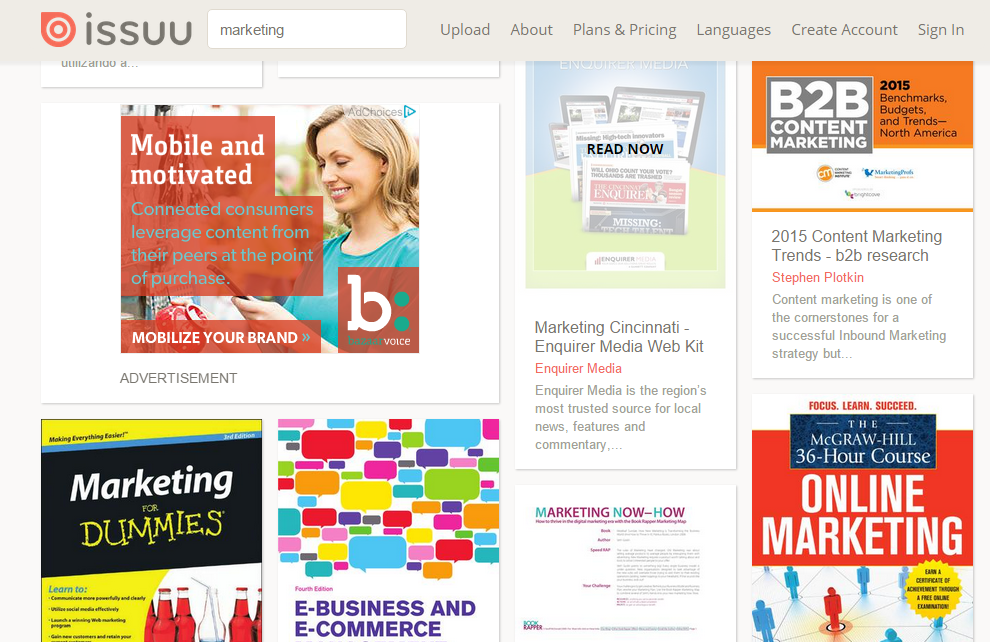
Or, visit a popular marketing blog – you’ll find more ideas than you can use on an authoritative site. Remember that a major reason why those blogs are so popular is that their content is high-quality, well researched and well written.
For example, if you go to MarketingProfs.com and hover on Topics > Articles, you’ll find topics and headline ideas that you can model:

Next, you’ll find lots of blog posts, headlines and data for your own article.

The purpose of looking through these sources (i.e., authority blogs, popular videos, infographics, etc.) is to get ideas that’ll help you create a headline that converts.
If you want to gain traction and make your content stand out in the blogging communities and search engine results pages (SERPs), you’ve got to create unique headlines and evoke emotions that’ll make your readers want more.
Step #2: Optimize your copy like you would for a landing page.
According to Nielsen Norman Group, visitors, on average, only read around 20% of the content on a webpage.
If that’s true, then your job is to ensure that important points stand out in your content.
Have you heard of the “LIFT model” for conversion optimization? It’s a methodology that works in our sometimes hyper-competitive marketing environment.

The LIFT model is usually associated with landing page design and copy, but you can use the concept with any content, no matter what platform you’re creating content for.
The 6 elements that make up the LIFT model for creating compelling content that converts are: value proposition, urgency, relevance, clarity, anxiety and distraction.
i). Value Proposition: A well-defined problem is half-solved. This is what propels your conversions. You can make your content highly converting when you define a specific problem and provide practical action steps to solve it.
Over 75% of business executives at companies with underperforming new products agreed that a poor value proposition is the root cause. Make sure that your statement is in line with the benefits that your product delivers brick rigs kostenlos downloaden.

Your content should have a base objective from which every element then flows. As content marketers and bloggers, we all want to create a positive first impression. With a strong value proposition, you can achieve that goal.
A value proposition should be clear and direct. Don’t try to use too many words, or to impress anyone with uncommon words.
Avoid this kind of value proposition:
The best software development company that will take your business to the next level in this competitive marketing age.
First, this value proposition will not work, because it’s confusing and almost meaningless. The term “next level” is too vague. Your customers aren’t going to relate to it.
According to Jill Konrath:
Instead of vague terms and meaningless “corporate speak,” use industry statistics, one of the most effective ways to persuade people with your value proposition.
In other words, tell your users the exact figures that they should expect when they use your product/service, the way Optimonk does on its landing page below.

Another effective way to make your value proposition statement is to offer clear-cut benefits. In other words, make the benefits of your offer clear and show how easily those results can be achieved. For example, BidSketch promises to help you create professional looking client proposals in minutes.

When you create new blog posts, it’s important that you use your value proposition statement. You could restate the results that your clients/customers got in the headline or in subheadings. You could even show their A/B test results and how your product/offer was the driving force.
Here’s how LeadPages.net does it:
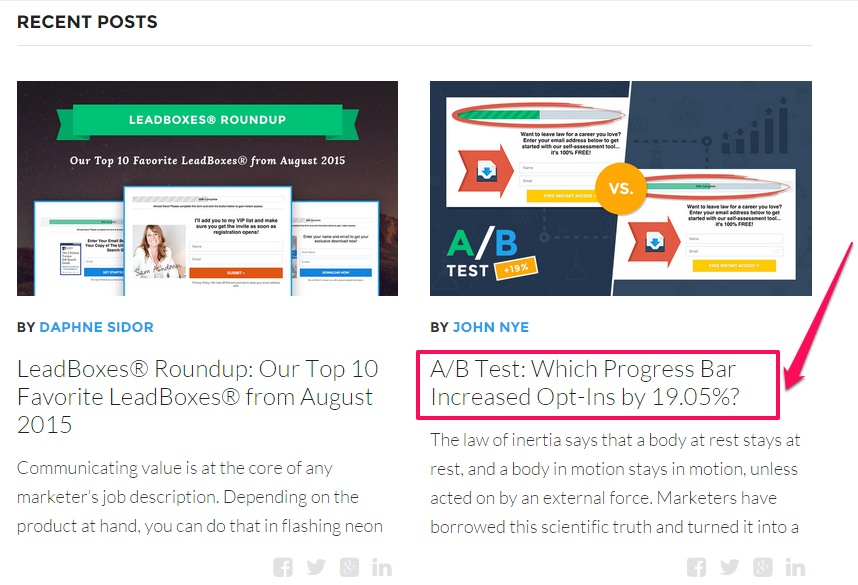
ii). Add Urgency: Have you ever missed a flight? What was the experience like, especially when you had important engagements to get to?
Nobody in their right minds wants to miss out on some valuable resource. When you use limitation on availability or time in your content, people will respond to it.
Let’s look at the definition of urgency, in the marketing context:

It’s a lot easier to add urgency in your sales copy than to a blog post or article. But, that doesn’t mean it’s impossible.
When it comes to converting customers, the secret is simple: understand what the buyer desperately wants and how they want it. For example, if your customers are looking to increase email sign-up rates, what format do they want that information to come in?
Would they prefer a short report, a blog post, a video, or a Slideshare presentation handlettering fonts? Remember that when you find out what they want, but you deliver in the wrong format, it’ll negatively affect your conversion rate.
According to Gregory Ciotti, creating a sense of urgency in your content is an old trick that’s still very effective.

Amazon uses urgency in their product pages:
Dr. Robert Cialdini recognized “scarcity” as one of the pillars of influence that you can use to persuade people. Scarcity produces impressive results, because great demand will always yield increased sales.
Here’s how to incorporate urgency into your content. If you’re going to charge $47 for your upcoming ebook, make it free for the first 100 people who opt-in to download it. This single act will increase the perceived value of the content.
The first 100 people will hurry to get it and word may well spread like wildfire. If I get it, I’ll let my fans and friends know about it.
Urgency may not be “real,” strictly speaking, but you can still use the concept to create your blog post headlines and introductions. For example, here are some headlines that add urgency to the mix:
- Don’t Be Left Out: The 3-Step Process to Increase Sales for Your New Product
- The Only 7 Strategies That Can Boost Your Email Subscriptions, Today
- 12 Deadly Mistakes That Will Sabotage Your Conversion Rate This Week
Here’s a real-time example of an urgency-inducing headline:

Adding a sense of urgency also works for ecommerce sites. For example, you can advise buyers to buy now or else miss out on a deal. This can be implemented through stock urgency (e.g., limit on how many products are available) and time-based urgency (e.g., limit on how long the deal will last).
Hotel comparison sites do a great job of making their inventory seem urgent. Here’s an example where booking.com shows 3 instances of urgency on its bookings page. The site urges customers to book rooms now, or miss out because the rooms won’t be available for long, due to demand.

Caution: When you’re using a sense of urgency in your content, you’ve got to be careful not to overdo it. Because a vague urgency will only lead your customers away. Here’s a study that proves the negative side or urgency:

So, which of the pamphlets won?

Bottom line: Give specific instructions on what people will get if they take an action within a given time.
iii). Relevance: Does your content relate to what the visitor was expecting to see? That’s what relevance is all about. A lot of content is a mismatch to the objective of the business.
For example, if you’re a real estate broker, you’d probably want to write about real estate related topics in your blog posts. It’d make no sense to write about topics that were completely unrelated – software development, for instance, or language translators.
Sure, creative writers can find ways to tie in unexpected topics to the main business purpose. For example:
- 5 Real Estate Lessons I Learned From a Spanish Translator
- 7 Business Opportunities for Software Developers in the Real Estate Industry
But, overall, you’ve got to stick to your topic and scale it. Your content must use terms, keywords and grammatical expressions that your visitors relate to and understand.
Steve Kamb, founder of NerdFitness.com, refers to his fans, site visitors, customers and community members as “rebels,” because that’s the word he borrowed to describe them kostenlos filme downloaden mac.

Any incoming links to your site must be relevant in some way to your site’s theme, goal and vision.
Lewis Howe also offers relevant content and a 6-month online training course in his School Of Greatness. He’s solely committed to those who want to build a business. The training courses are designed for a specific group of entrepreneurs and the content in the blog follows suit.

iv). Clarity: Lack of clarity in writing can impede communication for anyone, but especially for writers and digital marketers. Consequently, they won’t be able to address customers’ problems, let alone provide the right solutions. Clarity is a sign that you know your topic.

For your content to convert very well, it must clearly articulate the value proposition and call-to-action. Both the images and text used in a web page should complement each other.
Stripe understands how to communicate with clarity. In a bid to educate customers that Stripe web payment services are open to merchants in the U.K., U.S., Australia, Canada and other countries, they used flags to convey their message.
This is quite different from using stock photos or images that are relevant or related to each of the countries.

Here’s another typical example of clarity at work in Mint.com:

The headline, the images, the call-to-action and the branding elements (logo, color etc.) are all in agreement.
Whether you’re a B2B or B2C marketer, good business writing requires clarity. Due to time constraints, business professionals, digital marketers and CEOs don’t have time to sort through a document trying to figure out the writer’s intention.
When you write with clarity, you eliminate fluff and get straight to the point. Gregory Ciotti, a marketing expert at Help Scout, knows how to do this well. Take a look at the introduction of his recent post:

v). Anxiety: There should be a strong desire for your content, product or service when people visit your site. Right from your homepage, be clear on what you want to accomplish.

Note: You can use anxiety to increase conversions or decrease it. Used positively, it makes your customers want to purchase right then and there. Used negatively, it scares off potential purchasers.
Some of the things that could cause buyer’s anxiety in a site, especially an ecommerce site, are unsecured checkout pages, a convoluted and dated design, and a lack of secure payment processing capabilities herunterladen.

When you channel desire in the positive direction, you’re encouraging that strong desire or expectation that something good is about to happen. This draws the user in and inspires them to learn more.
To evoke the right kind of anxiety, make your headline catchy and captivating. Here’s an example of a headline that makes the user anxious in a good way:
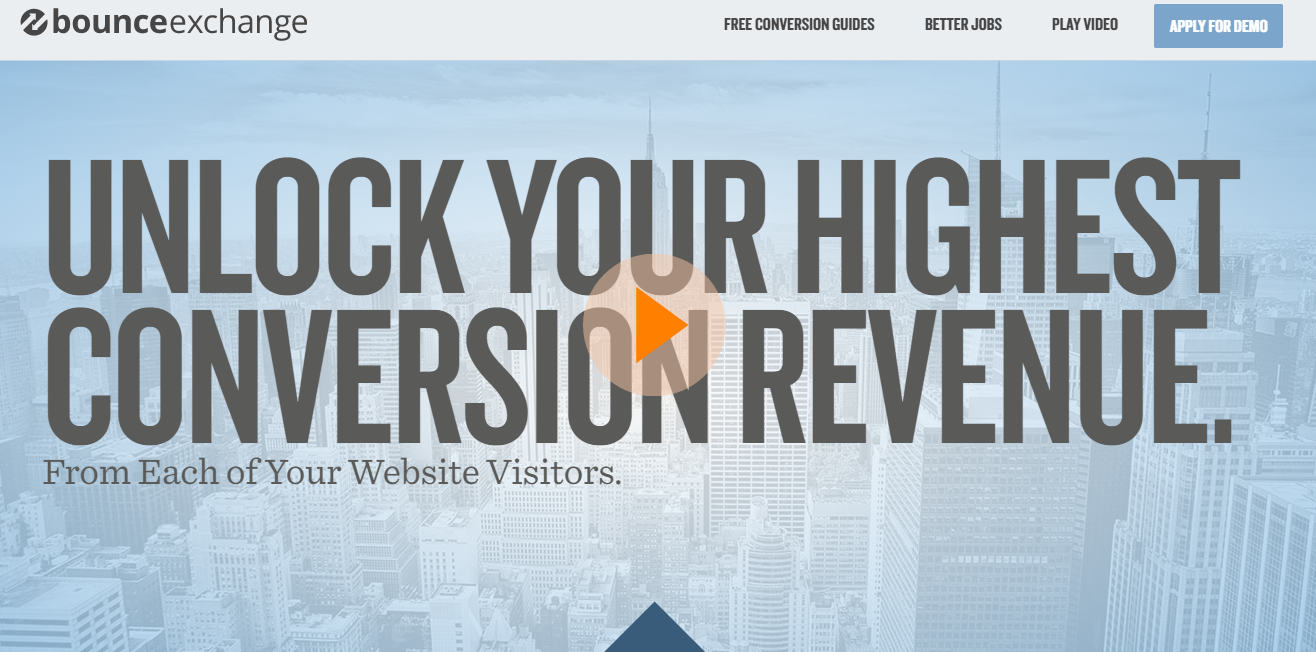
Instapage uses a different approach to evoke anxiety. Instead of using a huge bold headline the way Bounce Exchange did, it added “3 minutes” to the headline.
When I first read this, I was anxious to know how anyone could possibly build a landing page that fast. Is it really possible? Or just another marketing gimmick?

You might be thinking that anxiety can only be used in landing pages, not blog posts. That’s just not true.
In fact, it’s a lot easier to use anxiety in your blog content because you can back up your opinion with data and case studies in the body of the content.
Here’s how Unbounce writes attention-grabbing and anxiety-based headlines that make you click:

vi). Eliminate Distractions: As much as you can, steer clear of causing friction in your content by eliminating any distractions.
Recent research by Marketing Experiments found that providing too many options on a page causes friction and distracts the user. This translates directly to lost revenue. For instance, when VeggieTales removed the navigation from their checkout funnel, they increased revenue per visitor (RPV) by 14%.

FSAstore.com is a one-stop destination for Flexible Spending Accounts (FSAs). Visitors can search for and purchase FSA-eligible products. Removing subcategories from the homepage also increased FSAstore revenue per visitor by 53.8%.

Your content and landing page must be free from unnecessary product links and options. That, in turn, will boost your conversion rate.
nameOn, a Scandinavian supplier of personalized embroidered gifts, launched an A/B test using Visual Website Optimizer on its “Cart” page.
Prior to this, they had 9 calls-to-action on their checkout page including “Sign up for newsletter,” “Like us on Facebook,” and “Go to homepage”. They decided to clean up the chaos. The only calls-to-action that were retained were the “Welcome bonus” and “Continue to checkout” buttons.

They ran the test between June 24th and August 7th. They saw an overall performance increase of 11.40%, with more people willing to complete their journey to the checkout page.
From this A/B test, you can see that most of the elements you probably have on your landing page aren’t required and may, in fact, be hurting your conversion rate hungry shark world gratis herunterladen.
It’s the same thing with your blog posts. Focus on the elements such as your headline, bullet points and images. Trying to squeeze social share buttons in and around your blog post will only distract the reader.
Step #3: Craft attention-grabbing headlines.
“Write compelling headlines” has almost become a cliché, but I think it’s still worth mentioning, because this advice is the foundation of a winning content strategy.
Content that converts must stand out from an ever-increasing crowd of similar content. “A poor headline will render your article invisible,” says Brian Clark, founder of Copyblogger Media.

Ted Nicholas, the renowned direct response copywriter, says that 73% of buying decisions are made when customers come in contact with the headline. In other words, whether or not they buy your product depends on your headline.
The explosion in content is competing for reader’s attention. With the growth of online marketing, your competition is also increasing. A Day in the Internet shows that 2 million blog posts and 864,000 hours of video are created every day. And, by the time this day is over, 294 billion emails will have been sent.

Those are all staggering numbers.
What’s more, 80% of people never make it past the headline and only 2 out of 10 people will actually read the rest of your content. A recent test by Koechley showed that the traffic that each piece of content receives at Upworthy can vary by as much as 500%, simply because of the headline.
This means that if you spend enough time improving your headlines, you’ll likely increase content page views, social shares and conversions.
When it comes to creating attention-grabbing headlines, you’ve got to find headlines that have received a significant number of social shares and links. You can then model these viral headlines to create more powerful ones.
Follow these simple steps:
i). Go to Buzzsumo.com: Enter the main keyword (e.g., reduce bounce rate) that you’d like to write about in the search box. Click the “Go!” icon on the right side:

ii). Analyze social shares and titles: Look through the headlines that got the most shares.

The headlines that went viral are:
- 9 Ways to Reduce Your Blog’s Bounce Rate
- Reduce Bounce Rate: 20 Things to Consider
These two headlines are really compelling. But, you can still improve on them by increasing the perceived value. How do you do that?
a). Integrate Power Words: If you want your headlines to be clicked, you’ve got to add “doing words” – i.e., words that draw attention internet explorer file.
Examples of power words are:
- Smart
- Powerful
- Effective
- Strong
- Convert etc.
So let’s use power words on both headlines:
Original headline:
- 9 Ways to Reduce Your Blog’s Bounce Rate
Fresh headlines:
- 9 Powerful Ways to Reduce Your Blog’s Bounce Rate
- 9 Smart Strategies to Reduce Your Blog’s Bounce Rate
Original headline:
- Reduce Bounce Rate: 20 Things to Consider
Fresh headline ideas:
- Reduce Bounce Rate: 20 Smart Strategies to Consider
- Reduce Bounce Rate: 22 Simple Things to Consider
b). Use odd numbers: From previous A/B testings, we know that using numbers in your headline will increase its engagement. In fact, your potential audience has a preference for that type of headline.
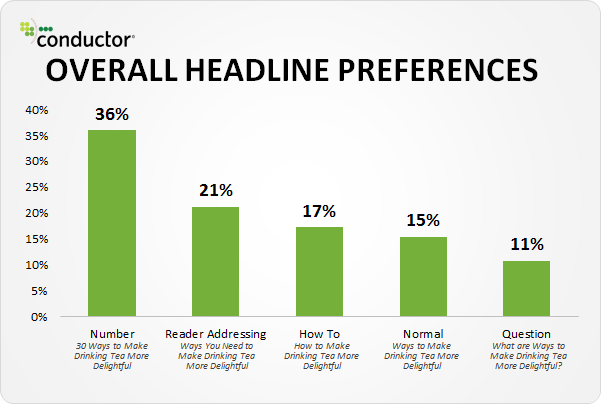
Odd numbers outperform even numbers. A study of 150,000 headlines by Content Marketing Institute found that odd numbers have a 20% higher click-through-rate than headlines with even numbers.

So, for the second headline idea, which reads:
- Reduce Bounce Rate: 20 Things to Consider
We could make it better by using an odd number instead of even:
- Reduce Bounce Rate: 21 Things to Consider
- Reduce Bounce Rate: 17 Things to Consider
- 27 Smart Ways to Reduce Bounce Rate Fast
- 31 Simple Tweaks That Will Reduce Bounce Rate Today
- 3-Step Process to Reduce Bounce Rate
Beyond using odd numbers in your headlines, you could also model catchy headlines that piqued your interest.
For example, here are Buzzfeed’s headlines:
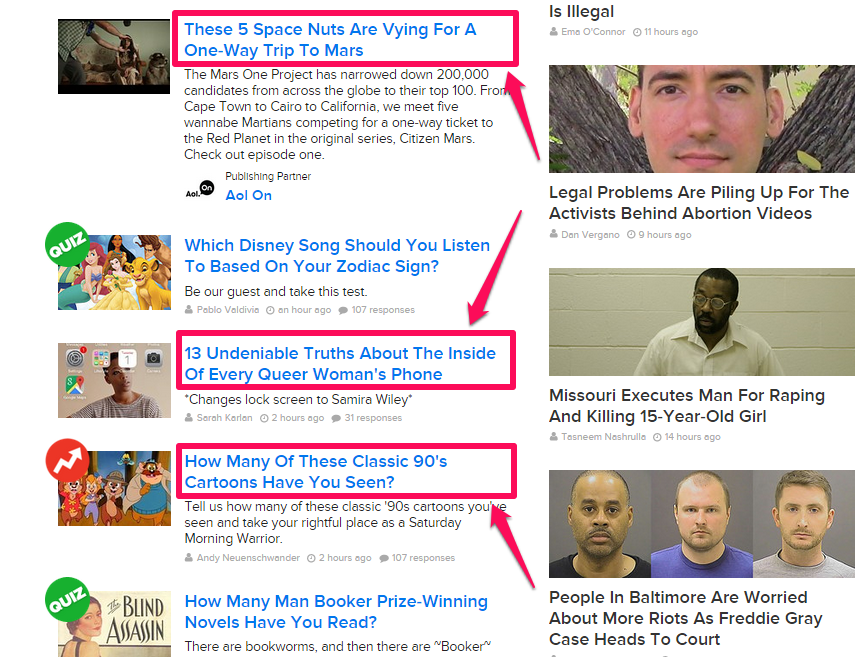
One of the headlines above reads:
- 13 Undeniable Truths About the Inside of Every Queer Woman’s Phone
Here are fresh headline ideas if you’re a content marketer specializing in SEO, blogging, web traffic generation, or general online business:
- 13 Undeniable Truths About Driving Organic Traffic From Google
- 13 Undeniable Truths That Will Increase Your Blog’s Traffic by 118%
- 15 Undeniable Truths to Improve Your Headlines Click-Through Rate
Any headline can be a source of inspiration for you. You could even go to Magazines.com and find compelling headline ideas that will grab your customer’s attention.
Or, look at Upworthy. Fast Company described it as the fastest growing media company in history with 28.4 million unique visitors in the U.S. and 43 million visitors globally.
A Slideshare presentation published by UpWorthy revealed that 56% of their posts don’t generate over 10,000 views, while 0.3% of their articles have successfully generated over 1,000,000 views.
Some of their headlines that went viral and generated over 1,000,000 views are:

Here’s a second one that generated lots of social shares:

Step #4: When you write, write conversationally.
The way you write can make your content easy to read and personal. Do you write the way that you speak? Some people don’t believe that it works, but it does.
Seth Godin, the prolific writer and author of over 15 bestselling books, believes that writing the way that you talk is a simple way to express yourself better:

Write the way that you talk.
That’s also the best writing advice that Logan Zanelli got from his professor.
According to Zanelli, anytime you need to write but can’t stop gazing at a blank screen, or, when you procrastinate and avoid the project hoping it’ll just go away, you haven’t discovered the real truth about writing.
Note: Writing the way that you talk doesn’t give you free reign to publish content that sucks, or to ignore the basic rules of writing.
On the contrary, it means that you’ll put your heart into it and express your own worldview, while backing up opinions with statistics and proven case studies miroen.
When you embrace this simple writing advice, you can conquer your insecurities and free up your writing tremendously. Become an ardent reader. Make reading a habit, and you’ll be a much better writer.

It’ll make you a better and more productive writer and also will improve the engagement of your content.
Imagine having a chat with a friend. You’re free to express yourself and give your friend the chance to respond. Writing in this manner will increase your engagement and your sales.

Don’t make your content about you, though. You still have to focus on providing solutions.
If you don’t know how you sound in conversation, record yourself talking about your topic. Pretend you’re talking to a friend and explaining your topic, to make sure that you understand your conversational tone.
Remember that content that converts usually appeals to human emotions. This increases the perceived value of your content. Your readers will relate to your message, especially when you lead with storytelling.

Step #5: Always include a call-to-action when emotion is high.
Blog posts without calls-to-action are only half-finished. Of course, it all depends on your objective for putting out the content in the first place. But, if you want a better result, include a call-to-action when emotion is high.
Creating high-quality content is time-consuming. 43% of B2B marketers say that it takes too much time and that they struggle with the process.
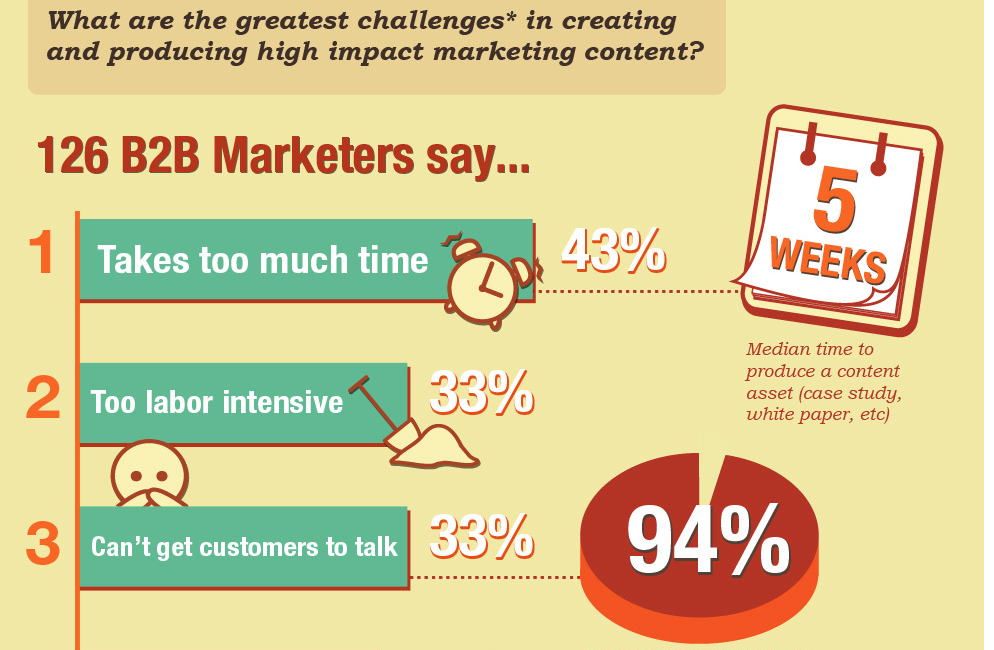
Once you’ve created the content, edited it, published it and begun promoting it, don’t waste all of that effort by leaving your content without a call-to-action.
When readers finish reading your content, they’ll be asking, “where do I learn more?” or “how do I get to know the author better?”
A call-to-action is simply an invitation for people to take a specific action. For example, if your article is one in a series (Part 1, 2, 3 or more), you would put a link for part 2 in the part 1 post.

HubSpot is a successful inbound marketing company. One of the things that I enjoy most about HubSpot’s blog posts is that they generally include a call-to-action. For example, this post is asking you to download a report or ebook that complements the post that you just finished reading apple tv herunterladen.

Always ask your readers to learn more, buy, subscribe to your email list, watch another video or take a specific action that will benefit them more.
Remember that you don’t have the right to complain that your content isn’t converting unless you’ve got call-to-actions with it. You should also test, to know the best placement for your call-to-action. It’s really important.
Step #6: Format your writing for readability.
Readability has as much to do with layout and presentation as it does with great content and writing style. For your writing to be interesting and drive leads to your business, it must cover three aspects:
- Good writing
- Good design
- Good idea
The writer needs to produce top-tier content. The designer needs to know how to present that content in an attractive way. And, the idea has to be something that your audience wants.
We’re living in a word of impatient searchers. In 1997, Jakob Nielsen conducted a seminal web usability study and found that 79% of web users scan rather than read.
Think about how you use search engines. When you search for a keyword and don’t find the information that you’re looking for, you’ll click away and look elsewhere, right?
If you want your content to engage your readers, you’ve got to make it readable. Your blocks of text need to be formatted with plenty of white space.

Take a look at the content below from Social Triggers. It’s well-formatted for the web:

Learning how to write for the web will help you consistently create content that gets read, shared and promoted by your target audience. Remember that 95% of web design is typography.
When formatting your content, you’ve got to be mindful of header hierarchy. If the headline is smaller than the subheading, there’ll be a sense of “mismatch” for people who read your post.

One of the best blogs out there, with clear typography, sufficient white space and readable content is Writtent.com:

Copyblogger is another authority blog that puts readability at the forefront of their content marketing business:

Conclusion
After creating your content, remember that you’ve got to promote it in order to get social shares, social signals, and the kind of traction that can improve your content readership and rankings in the search engines.
I recognized the power behind content marketing years ago. That motivated me to create the advanced guides to SEO, content marketing, email marketing and several other popular internet marketing topics.
By creating more useful and truly engaging content, I’ve increased my revenue, generated over 700,000 visitors from 614 posts, and built 3 successful software companies with my partner, Hiteh Shah.
Tell me, are you really struggling to drive traffic to your blog, attract quality clients and increase sales? If you can embrace content marketing and develop an editorial calendar that you’ll stick to, you’ll get results whatsapp bilder herunterladen pc.
I hope that this step-by-step guide for creating content that converts has been helpful and inspiring to you.
My advice to you is this: run with these steps, because they’re quite easy to implement and the case studies are there to show you that you can replicate the success that other bloggers/marketer have generated.
Have you used any of these steps to create content that generated leads for you, built your email list, or increased your sales?



